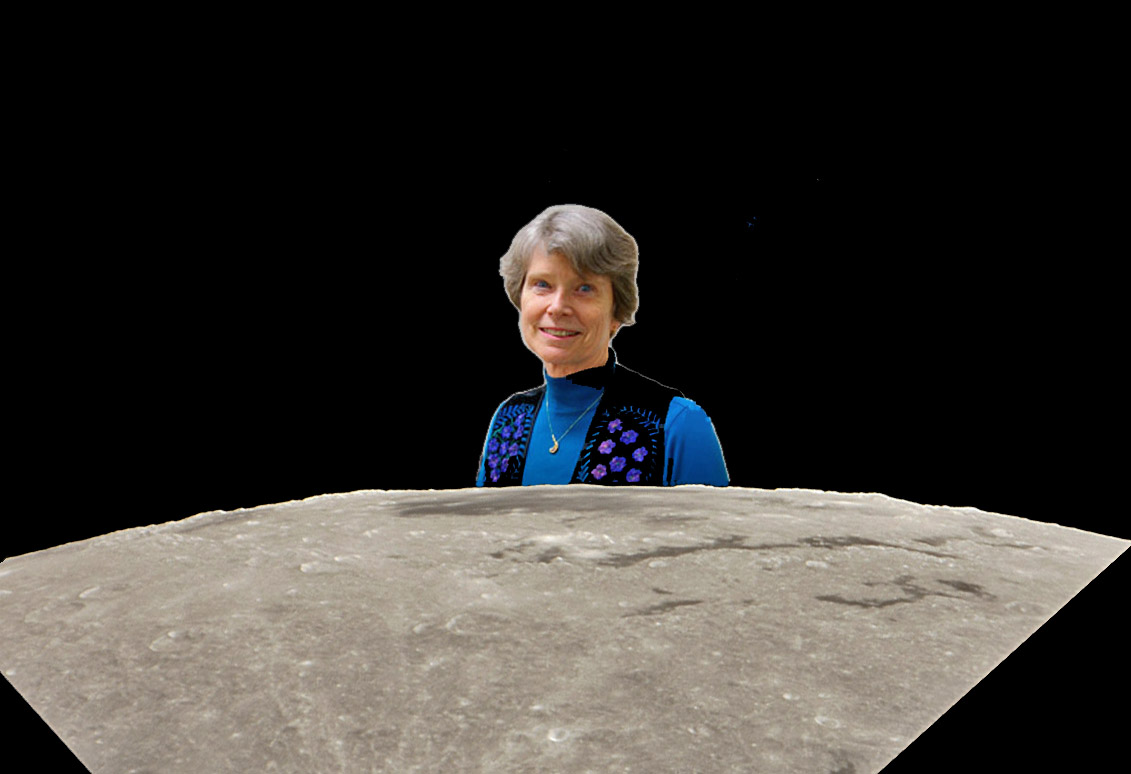October 24, 2018
Moon Woman
Originally published August 10, 2009

Orientale image by Kostas Kalimaftsis, Greece, and Carle Pieters photo from JAXA interview. The Inner Rook Mountains are the mountains between the inner Mare Orientale lavas and the the middle stripe of mare, Lacus Veris.
Carle Pieters is a lot like the Moon, a rare and unique presence. Carle is one of a handful of women who have made major contributions to our understanding of the Moon. Currently she is the leader of the Moon Mineralogy Mapper instrument on the Indian Chandrayaan-1 lunar orbiter and also is a co-investigator on the Dawn mission to asteroids Vesta and Ceres. Carle started her career as a high school math teacher, first in Massachusetts and then as a Peace Corps volunteer in Malaysia. When she returned to the US she changed directions and studied spectroscopy at MIT and since then has become a world authority of the remote sensing decipherment of the mineralogy of the Moon, Mars, asteroids and meteorites. Two of her discoveries that are meaningful to scientifically inclined observers are that the central peaks of Copernicus contain the mineral olivine and the Rook Mountains of the Orientale Basin are anorthosite. Why are these important, or even of interest to observers? Central peaks form by the rebound of highly compressed rocks at the center of an large impact event. When rebound occurs rocks from great depth are brought to the surface and exposed in the central peaks. Olivine is a mineral found in the mantle of Earth, and is thought to occur in the lower crust and mantle of the Moon. Carle's detection of olivine in Copernicus strongly supports that contention. Anorthosite is a plagioclase-rich rock believed to have been created as low density scum at the top of the primordial Moon's magma ocean. The discovery of anorthosite in the Inner Rook Mountains - like a central peak, thought to be elevated from below the Orientale Basin - is strong evidence for the former existence of a magma ocean. So when you telescopically observe Copernicus and Orientale, think of them as probes that bring deep rocks to the surface, for Carle and other scientists to read and understand.
Chuck Wood
Technical Details
Moon image: 15 July 2009, 03.00 UT. SkyWatcher Mak180 & Canon 450D. 39 jpegs on Registax, Gimp.
Related Links
Interview with an impatient interviewer about the Moon Mineralogy Mapper.
Carle's university website
Yesterday's LPOD: Sideways Ejecta?
Tomorrow's LPOD: The Pillars of Earth
COMMENTS?
Register, Log in, and join in the comments.



